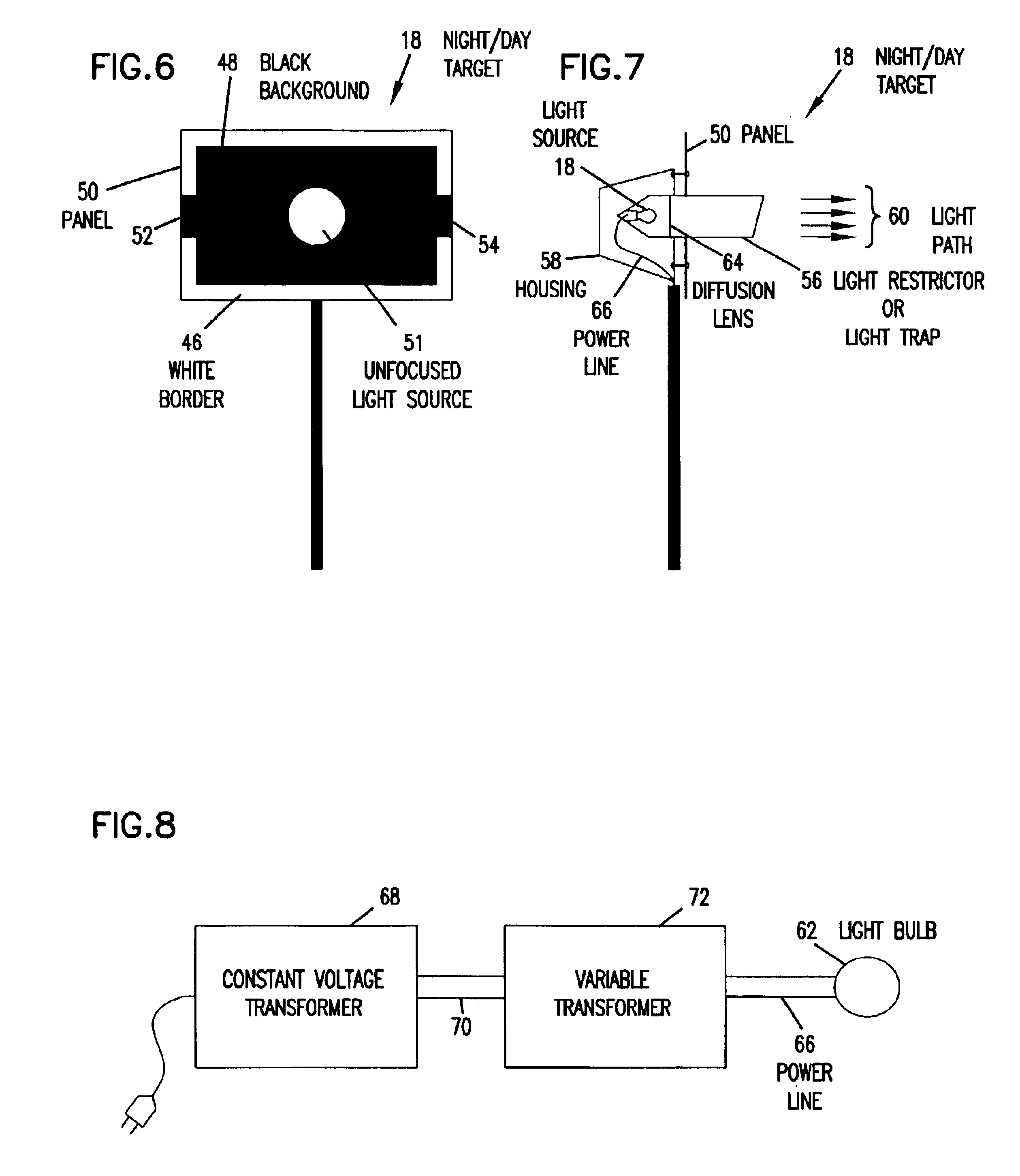Video camera-based visibility measurement system
a video camera and visibility measurement technology, applied in the direction of measurement devices, instruments, scientific instruments, etc., can solve the problems of reducing the visibility in the atmosphere, slms will report a very large error, slms are prone to providing incorrect visibility readings, etc., to achieve accurate measurements of atmospheric visibility and reduce costs.
- Summary
- Abstract
- Description
- Claims
- Application Information
AI Technical Summary
Benefits of technology
Problems solved by technology
Method used
Image
Examples
Embodiment Construction
FIG. 1 is a schematic illustration of a system 10 in which the present invention can be implemented. As shown in FIG. 1, a camera such as a video camera or digital camera is aligned to view a series of targets 14 in a region in which measurement of atmospheric visibility is desired. Camera 12 can comprise any desired detector device that is capable of detecting contrasting portions of the targets 14 during daylight hours and a light source that is provided in target 18 during low light level conditions. For example, any suitable CCD array that is focused to provide an image of the targets 14 can be utilized, including video cameras, digital cameras, scanners, or other similar devices. Camera 12 should have a built-in auto iris and back light compensation function in order to obtain a good quality picture. Camera 12 may also be housed in a defrost heater having a fan to prevent frost or fog on the lens. Compressed air may also be provided to blow the lens of the camera in order to qu...
PUM
| Property | Measurement | Unit |
|---|---|---|
| distance | aaaaa | aaaaa |
| distance | aaaaa | aaaaa |
| distance | aaaaa | aaaaa |
Abstract
Description
Claims
Application Information
 Login to View More
Login to View More - R&D
- Intellectual Property
- Life Sciences
- Materials
- Tech Scout
- Unparalleled Data Quality
- Higher Quality Content
- 60% Fewer Hallucinations
Browse by: Latest US Patents, China's latest patents, Technical Efficacy Thesaurus, Application Domain, Technology Topic, Popular Technical Reports.
© 2025 PatSnap. All rights reserved.Legal|Privacy policy|Modern Slavery Act Transparency Statement|Sitemap|About US| Contact US: help@patsnap.com



